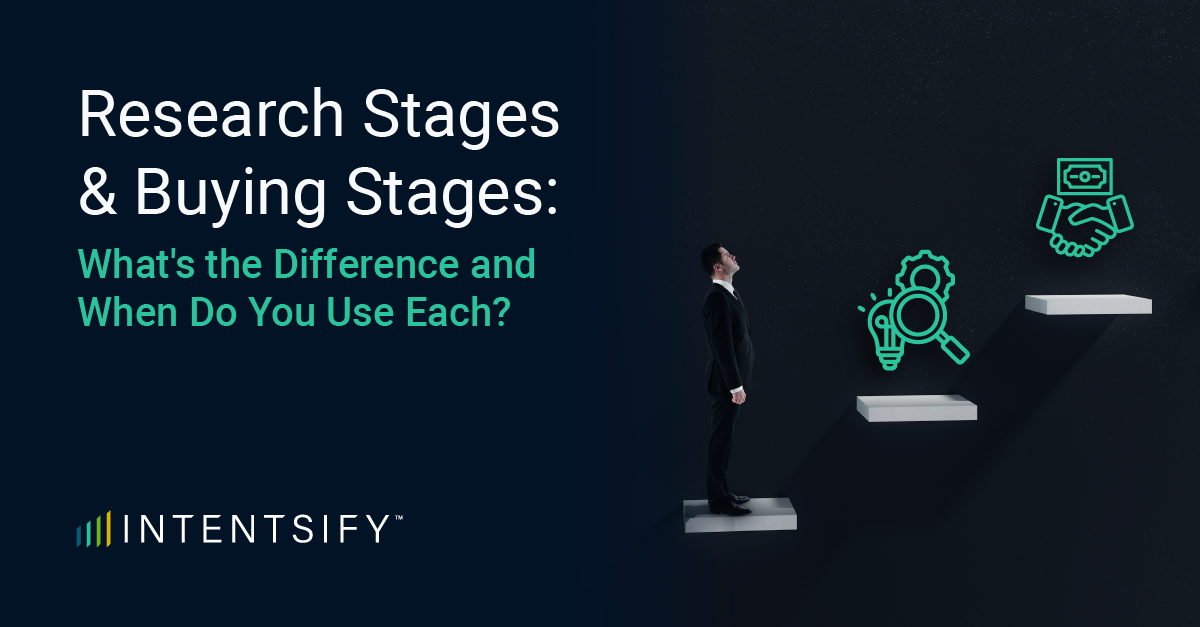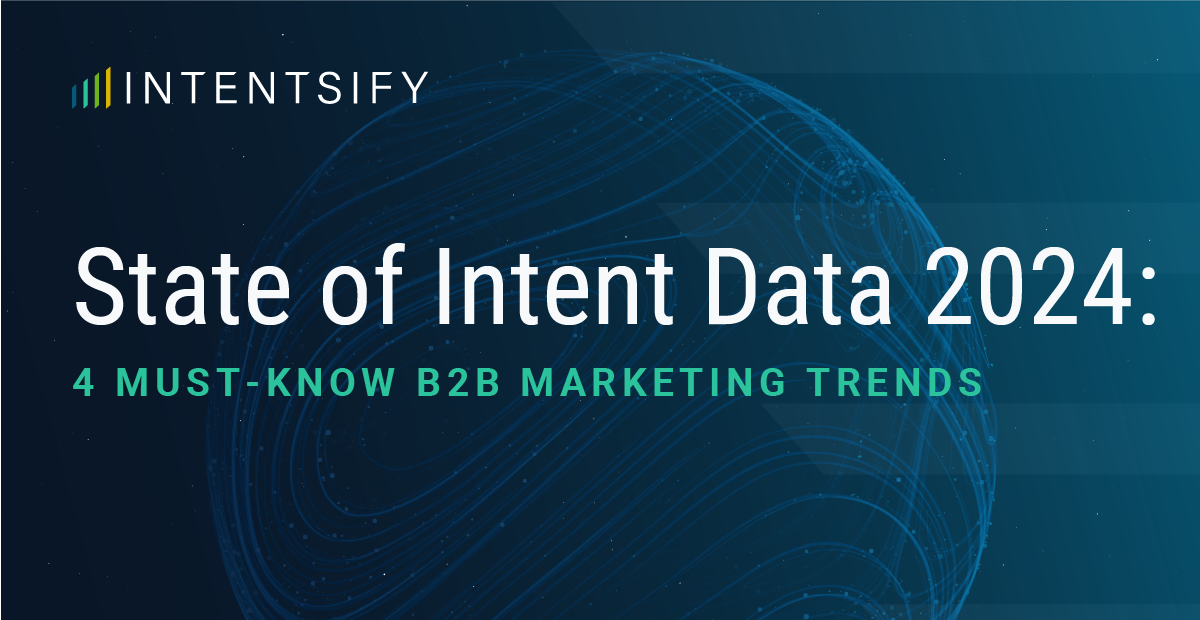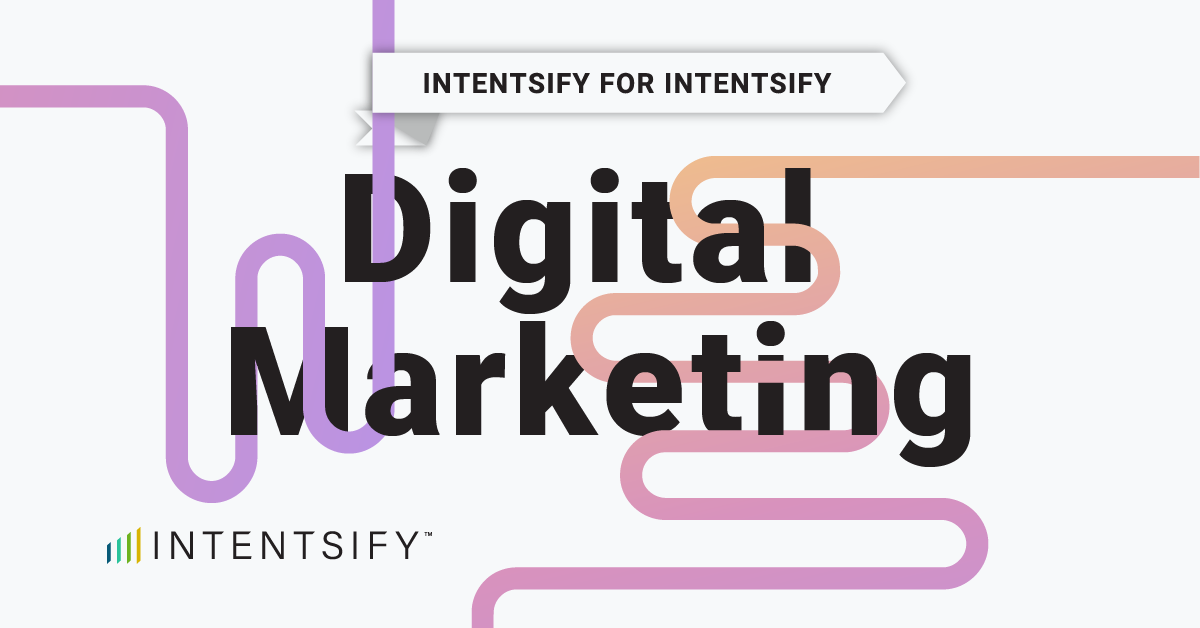Understanding buyer behaviors is essential for knowing when and how to engage with target accounts throughout the complex buying journey. It is about tracking and analyzing the digital footprints buyers leave behind as they move from initial awareness to purchase. Buyer intent data serves as a powerful tool that can provide important insight into where each target account is in their research journey and which topics and solutions they are actively researching. While intent signals are strong indicators of interest, they should not be used on their own to predict an account’s propensity to buy. In this blog post, we will dive into the differences between research stages and buying stages, where these insights come from, and how to leverage both stages for an effective go-to-market strategy.
Research Stages
Imagine a customer encountering your brand for the first time. They might stumble upon your website through a broad search term like “marketing automation tools.” This is the research stage, where customers seek resources regarding their challenges, identify their needs, and explore potential solutions. Buyer intent data at this point reveals subtle hints, not definitive conclusions that guarantee the account will make a purchase. Keywords like “comparison of marketing automation platforms” or browsing behavior across various competitor websites indicate initial interest– a dipping of toes into the market–while keywords such as “buyers’ guide for marketing automation platforms” indicates a stronger likelihood to purchase.
Best Practices for Leveraging Research Stages:
1. Nurture Your Target Accounts: Just because a lead is showing intent, it does not necessarily mean they are ready to engage with a seller. Before passing along to sales, leads should first be nurtured through marketing channels–e.g., paid search, email marketing, display advertising, content syndication–to generate awareness and prime them for sales engagement.
2. Engage with Relevant Content: Focus on informative resources like blog posts, white papers, case studies and webinars that align with the challenges and solutions each target account is showing intent for–as well as the research stage they are in.
3. Build Trust: Position your company as a thought leader that understands your audience’s challenges and provides valuable resources to help them navigate those challenges. Increasing trust can help strengthen your relationship with each account and increase their chances of engaging in the future.
Buying Stages
As the customer delves deeper, their actions become more decisive. While research stages are often derived from third-party intent data sources, buying stages are usually determined through your own first-party website data or CRM (Customer Relationship Management) data, including your sellers’ logged interactions with each account. Buyers might revisit specific product pages, download trial versions, or request pricing information. This is the buying stage, where purchase intent becomes clearer. And when the target account is in a later buying stage, which indicates they are in-market to buy, it is the perfect time for sellers to engage. Searches for “buy [specific marketing automation tool]” or significantly longer dwell times on product pages signal a hot lead, a target account that is more likely to convert.
Best Practices for Leveraging Buying Stages:
1. Arm Sellers with Relevant Insights: When sellers engage during later buying stages, they should be aware of the challenges, solutions, and products each account has been researching up to this point and use this intelligence to tailor their talk tracks and content selection.
2. Know Your Competition: While it is great to know when buyers are researching your products, it is just as important to know when both prospects and customers are evaluating your competitors. Understanding who is on their shortlist and what specific solutions they are researching helps sellers prepare talking points that highlight why your company is the clear winner.
3. Establish Credibility: Highlight your company’s accolades, offer product comparisons, customer testimonials, and case studies to demonstrate your impact on other companies with similar needs and position yourself as an industry leader.
Combining Research and Buying Stages
The customer journey is not a linear progression. Research and buying stages can interweave, with individuals revisiting information or comparing options even when nearing the purchase point. Research stage reflects this fluidity by offering additional insights beyond buying stage classification. While research stage can help inform the tactics, content and messaging used to engage with buyers, buying stage is great for determining how close an account is to making a purchase. The intensity of research activities, for example, can be gleaned from the frequency of branded searches or website visits. Similarly, dwell time on specific pages and the engagement with key resources provide a richer picture of buyer interest and readiness.
Best Practices for Leveraging Both Stages:
1. Segment Audiences: Regardless of which stage an account is in, delivering hyper-relevant content and ads based on their intent signals (i.e., topics/keywords, volume of signals, stage) is critical to driving engagement.
2. Combine Research and Buying Stages: For more accurate and robust intelligence, leverage all sources of buyer intent data to create a clearer picture of where each account is in their buyer’s journey. The more insights you have, the more precise, relevant, and aligned your content and messaging will be to each account’s unique challenges and needs.
3. Drive Cross-Functional Alignment: Ensure that your marketing, sales, and customer success teams are moving in lockstep, delivering a seamless buying experience that aligns with where each target account is in their buying journey. Share data insights to improve communication and coordination.
By recognizing the differences between research stages and buying stages, analyzing the nuances within each, and leveraging the power of intent data to inform your next best actions, businesses can move beyond generic marketing and engage customers in a personalized, targeted manner. This data-driven approach allows you to become a trusted partner in their purchase journey, guiding them with the right information and offers at the perfect moment. Remember, understanding buyer intent is the key to unlocking conversions and maximizing the potential of your digital marketing efforts.






